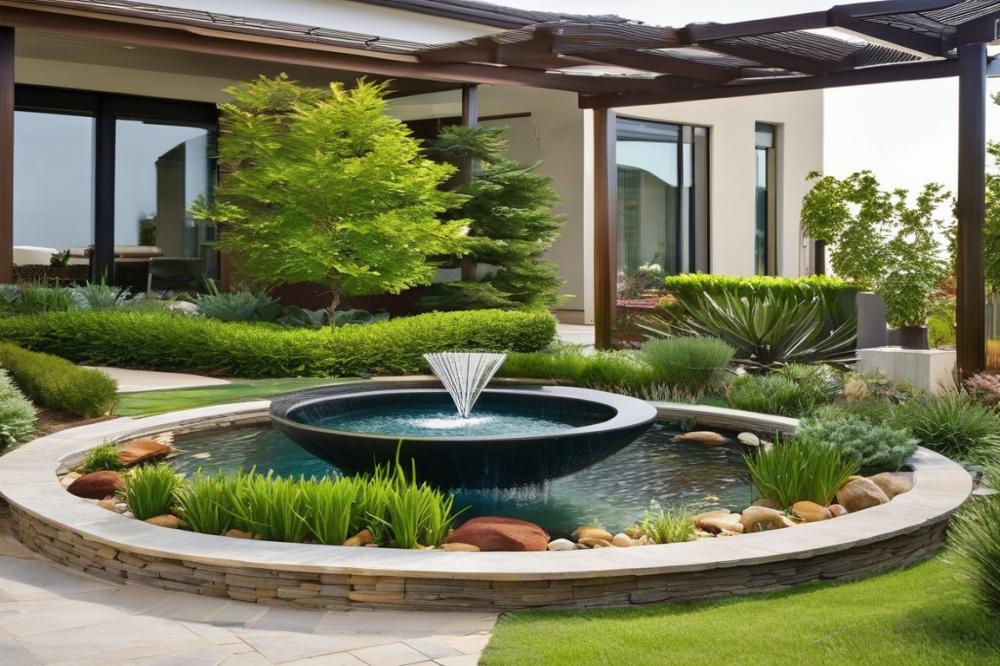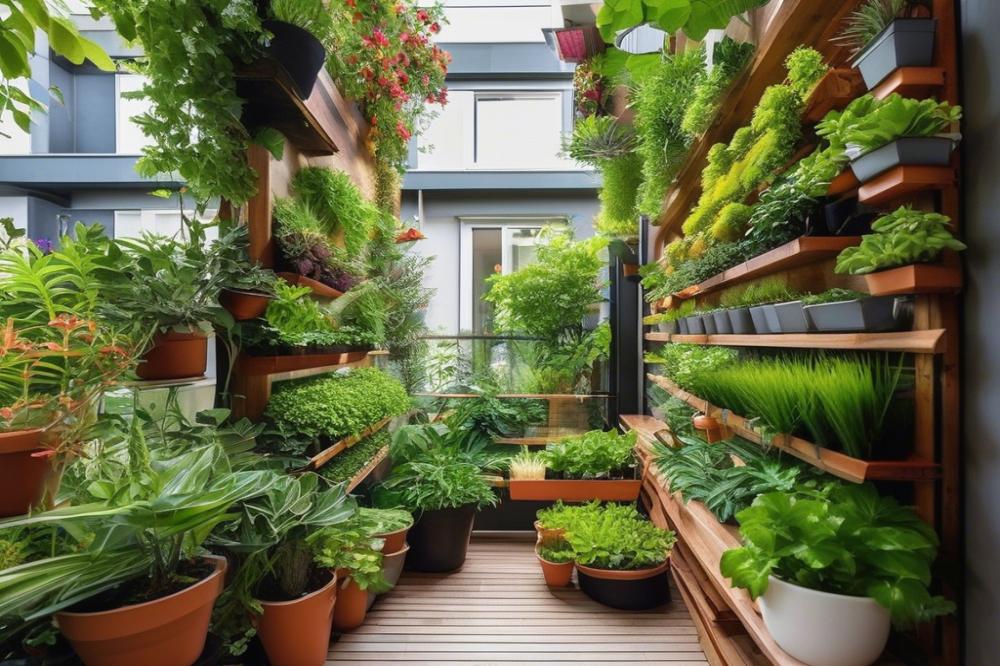Understanding garden water features
Creating a serene atmosphere in your outdoor space often starts with water. garden water features add beauty and tranquility, captivating visitors with their gentle sounds and shimmering reflections. Imagine relaxing next to a bubbling fountain or a peaceful pond filled with colorful fish. These installations can transform any backyard into an oasis.
Choosing the right materials is crucial. durable materials not only enhance the visual appeal but also ensure longevity. With constant exposure to the elements, your choice should stand against rain, sun, and temperature changes. These factors can wreak havoc on poor-quality items, leading to unsightly repairs or costly replacements.
This article aims to explore the top materials for building lasting installations. From stone to concrete, many options are available that cater to different tastes and budgets. Let’s delve into how each material stacks up against the test of time and nature.
stone
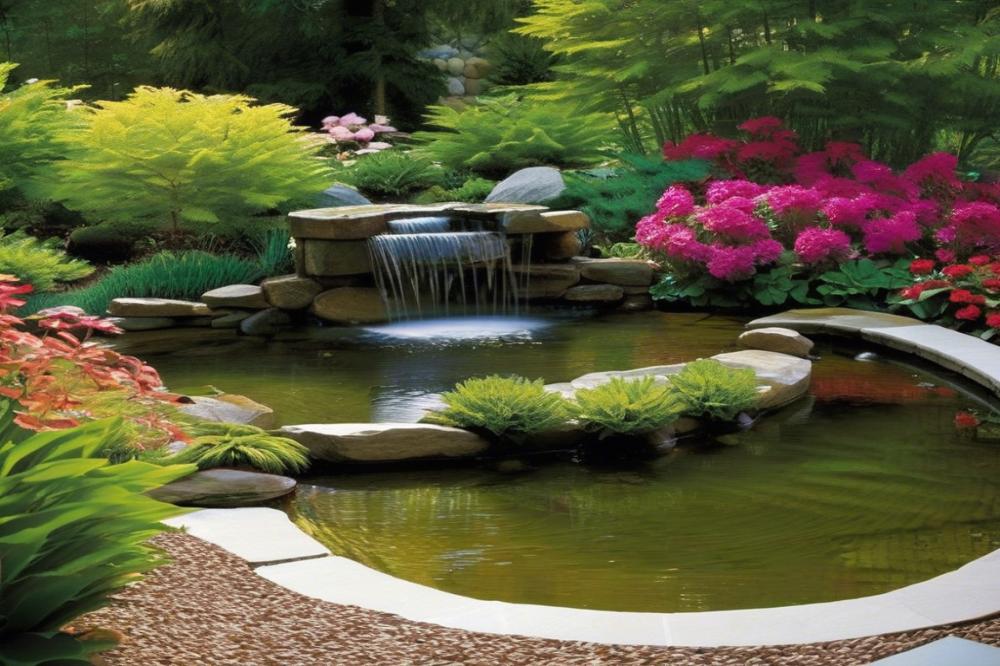

Using stone for your water feature offers many advantages. Its durability is unmatched, making it an excellent choice for a long-lasting investment. Unlike materials like concrete or PVC, stone can endure harsh weather conditions. This factor significantly reduces the need for frequent replacements or repairs.
Types of Stone Suitable for Wet Environments
Granite and limestone are some of the best choices for moist areas. Granite is incredibly hard and resistant to scratches. It stands up well against weather elements like rain and snow. Limestone, while softer, brings character and varies in color. Both types meet the requirements for beauty and functionality.
Aesthetic Aspects and Natural Beauty
Stone enhances the natural beauty of outdoor spaces. Its rich textures and colors add a unique charm to any garden setting. Using natural materials like stone creates a rustic and timeless feel. Elements such as moss can even grow over time, giving the feature an enchanting, aged appearance.
Maintenance Considerations
When considering maintenance, stone has its own quirks. Basic cleaning is often all that’s needed to keep it looking great. Moss removal may be necessary if you want to maintain a clean look. Unlike metal or fiberglass, stone does not rust or corrode. Therefore, it requires minimal upkeep compared to synthetic options. Weather-resistant properties also mean that it can withstand sun, rain, and temperature changes without degrading.
Concrete


Concrete is a top choice for those looking to create lasting water features in their gardens. It offers several benefits that make it a popular option among homeowners and landscapers. One of the most striking advantages is its strength. With proper care, it can withstand harsh outdoor conditions and remain intact for years.
Customization options are another major benefit. Concrete can be molded into various shapes and designs. You can create anything from simple birdbaths to elaborate fountains that suit your unique style. The flexibility in design lets you bring your vision to life. It can mimic the appearance of natural materials like stone and even wood, giving you a wide range of aesthetics to choose from.
Weather resistance is crucial for outdoor structures. Concrete stands up well against rain, sun, and snow. This durability means it will remain functional and attractive through changing seasons. With proper sealing, it can resist moisture, limiting issues related to water damage and algae growth.
However, it’s essential to consider potential challenges as well. Cracking can occur if the concrete is not mixed correctly or if it shifts due to temperature fluctuations. The weight of concrete can also be an issue during installation or if you plan to move it later. It’s heavier than alternatives like fiberglass or PVC, requiring additional support or planning to position it correctly.
While concrete offers multiple benefits and excellent customization, being aware of its challenges is important for a successful project. Balancing the pros and cons will help you create a water feature that enhances your garden while standing the test of time.
Fiberglass
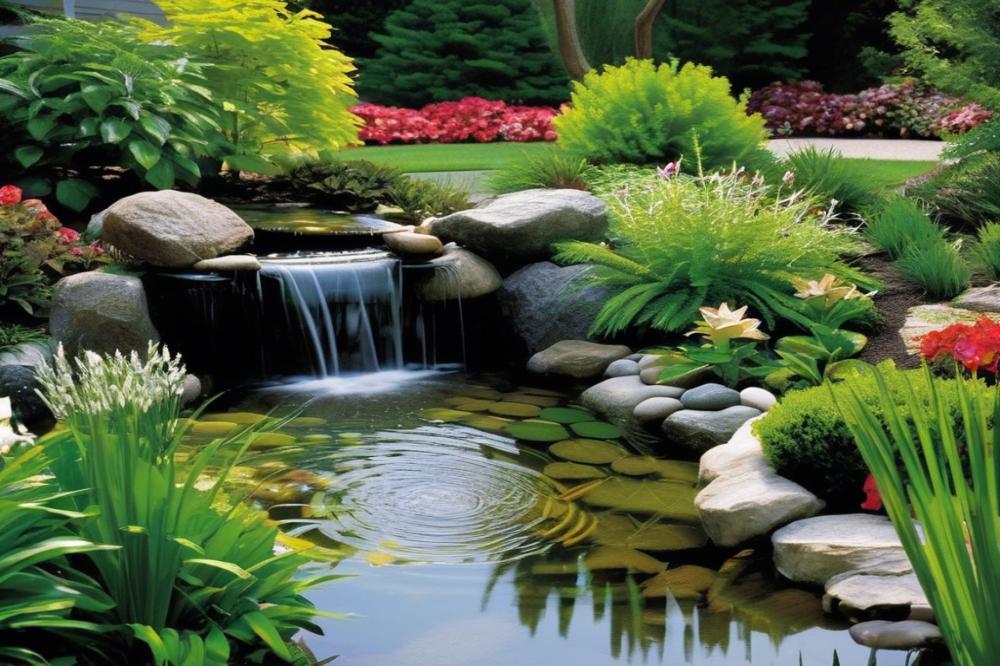

Fiberglass is a popular material used in water features. This composite material is made from fine glass fibers and resin. It is known for its strength and versatility. Homeowners often choose it for various outdoor projects.
One significant advantage of fiberglass is its lightweight nature. Unlike heavier options like stone or concrete, fiberglass pieces are easy to handle and install. This quality saves both time and effort during setup. Many people appreciate how simple it is to create stunning designs without the heavy lifting.
Another appealing characteristic of fiberglass is its resistance to harsh weather elements. It stands up well against rain, snow, and sun. The material is also UV resistant, which means it won’t fade or deteriorate quickly. That durability allows you to enjoy your garden water features for years without constant upkeep.
As for aesthetics, fiberglass comes in a wide variety of styles and finishes. Whether you prefer smooth, glossy surfaces or textured, natural looks, there’s something for everyone. Options range from vibrant colors to finishes that mimic materials like stone or clay. Homeowners can easily find a piece that complements their backyard decor.
This material is also often more affordable than metal or wood. With its long lifespan and low maintenance, fiberglass becomes a smart investment. It meets the needs of both budget-conscious buyers and those looking for quality. In terms of versatility, fiberglass truly stands out among the options available today.
Metal
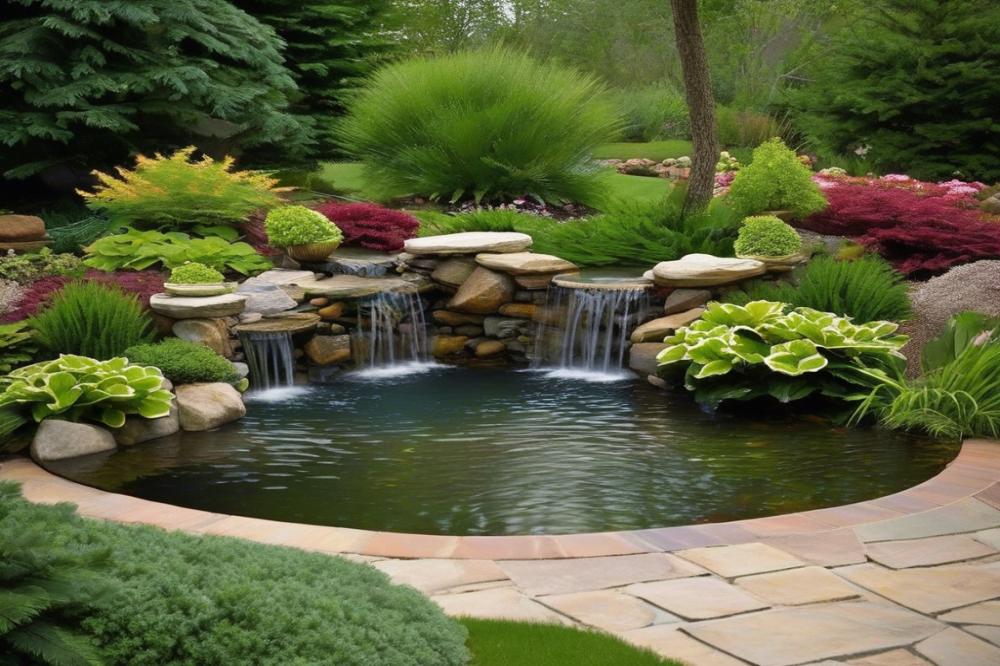

Metal is a popular choice for those looking to create stunning features in their garden. Stainless steel and copper are two common metals used for these installations. Both materials offer a sleek and modern look that can elevate the aesthetic of any outdoor space.
Stainless steel is incredibly versatile. This metal has a contemporary appearance that fits well in various styles, from minimalist to industrial. Copper, on the other hand, provides a warm, rustic charm. Over time, copper develops a beautiful patina that adds character and depth.
Durability stands out as a major advantage when using metal. These materials are resistant to rust and corrosion, particularly stainless steel. When properly cared for, metal water features can last for years, enduring the elements without losing their appeal.
Caring for metal features doesn’t have to be complicated. Regular cleaning will keep them looking fresh and vibrant. A simple wash with mild soap and water is often enough. Avoid abrasive materials that might scratch the surface.
Consider the combination of metal with natural materials. For instance, you might match a sleek metal fountain with natural stone or wooden accents. This juxtaposition can create visual interest and enhance the overall impact of your garden design.
Heavy-duty options like metal offer more than just good looks. They stand firm against harsh weather conditions. Unlike PVC or fiberglass, these materials do not warp or fade over time, making them a wise investment for garden enthusiasts.
Finally, when selecting your metal feature, think about how it will blend with other elements. Pairing it with items made from clay, stone, or even resin can lead to an impressive focal point. Create a harmonious environment that reflects your taste and complements your garden’s beauty.
PVC
PVC, or polyvinyl chloride, is a type of plastic widely used in many applications, including garden water features. It’s popular for its versatility and strength. Gardeners appreciate PVC for creating fountains, ponds, and pipes. Its lightweight nature means that anyone can handle it easily. Unlike stone or concrete, working with this material doesn’t require heavy lifting or specialized tools.
Cost-effectiveness is a standout feature of PVC. It often costs less than traditional materials like metal or fiberglass. Homeowners can achieve a beautiful water feature without breaking the bank. Its affordability allows for creative projects without the worry of overspending. Additionally, this material is easy to cut and shape, making it user-friendly for beginners and seasoned pros alike.
Weather resistance is another vital characteristic of PVC. It stands up well against rain, snow, and sunlight. Unlike wood, which can rot, PVC won’t warp or decay. This durability makes it a smart choice for outdoor use. Homeowners can trust that their investment will withstand the elements over time.
However, there are limitations to keep in mind. While durable, PVC may not have the long-term lifespan of materials like stone or concrete. It might fade over time under intense sunlight. Some may find it less appealing than natural materials, such as clay or wood, for aesthetic reasons. PVC can also lose structural integrity if exposed to extreme temperatures for prolonged periods.
Still, for those seeking a blend of affordability and ease of use, PVC can be an excellent choice for creating garden water features. Its unique blend of practicality and resilience makes it a worthwhile option in many settings.
Wood
Using wood in garden water features comes with both advantages and disadvantages. On the plus side, wood brings a warm, inviting feel to outdoor spaces. However, it is vulnerable to rotting and insect damage without proper care. Choosing the right type of wood is essential for durability. That’s where weather-resistant options like cedar and redwood shine. Their natural oils provide great protection against the elements.
The aesthetic warmth of wood can create a peaceful atmosphere. It complements various natural materials like stone and clay, blending beautifully with the outdoor environment. Designs can range from rustic to modern, offering flexibility in style. A wooden feature can enhance any garden, making it feel more alive and connected to nature.
Maintenance is really important when opting for wood. Regular treatments with sealants can protect the surface from moisture. Cleaning with mild soap and water helps keep it looking fresh. Over time, staining or painting might be necessary to maintain its beauty. Keeping an eye out for signs of wear and tear is essential to prolong its life.
Wood can also be combined with other materials. Integrating metal or resin elements adds contrast and visual interest. PVC piping can be used discreetly to manage water flow. Nonetheless, the charm of wood still stands out as a focal point. Ultimately, properly chosen and maintained wood can indeed become a stunning addition to any outdoor space.
Resin
Resin has become a favorite choice for constructing enduring water features. It offers a blend of benefits that make it stand out among materials like stone, concrete, and metal. This lightweight option provides contractors and DIY enthusiasts with versatility in design and application.
Think about installation. Using resin means less hassle. Its lightweight nature makes it easy to move and set up in various locations. Unlike heavy materials such as stone and concrete, resin can be transported with minimal effort, allowing for a smoother installation process. This material can also be molded into a variety of shapes and sizes.
When it comes to aesthetics, the options for realistic designs and colors are impressive. Resin can mimic natural materials like wood and stone, providing beauty without the drawbacks. Whether aiming for a modern look or a rustic feel, resin can achieve it all. You can find shades that blend seamlessly with outdoor environments, adding to the charm of your space.
Longevity is another significant advantage. Resin is known for its resilience against environmental challenges. It withstands harsh weather conditions, including rain, snow, and UV rays without fading. Unlike clay or wood, resin won’t crack or warp over time. Choosing this material means investing in a long-lasting feature for your garden.
Many people appreciate that resin is also a budget-friendly option. It often costs less than traditional materials while providing similar aesthetics. This allows you to create beautiful garden accents without breaking the bank. Overall, resin is a smart choice for those wanting both durability and visual appeal.
Natural Materials
Incorporating natural materials into your water features not only adds beauty but also enhances harmony with the environment. Using stones and pebbles can create a tranquil vibe that feels organic and refreshing. When you choose earthy components, you’re making a design choice that fosters a better connection with nature.
Examples of natural materials are abundant. Stone is a classic option, offering durability and a variety of textures. Pebbles can be used in pathways or as accents around water elements. Wood can add warmth, while clay provides unique shapes for your designs. Look for weather-resistant options to ensure longevity against the elements.
Environmental benefits are one of the biggest advantages of using natural resources. They support local ecosystems and integrate seamlessly into garden landscapes. Natural materials are often biodegradable, reducing your carbon footprint. Their earthy tones complement greenery and flowers beautifully.
When sourcing natural materials, consider local suppliers or even your own backyard. Reclaimed wood or stones from nearby landscapes can bring a sense of authenticity to your project. Make sure to assess each material for its longevity. For example, while wood gives character, it often needs treatment to become weather-resistant.
Effective use of these materials can transform your space. Arrange stones in layers for a waterfall effect or create a serene pond with clay accents. Think about how water interacts with each element. Consider adding resin or fiberglass in areas where weight and upkeep might be a concern. Balancing aesthetics and functionality is key.
Clay
Clay has been a popular choice for garden water features for centuries. Its natural appearance blends beautifully with outdoor settings. Numerous traditional methods incorporate clay, making it a favored material among artists and gardeners alike. You can find stunning pottery and sculptures that serve as both functional and decorative elements in garden landscapes.
Artistic designs crafted from clay showcase unique shapes and styles. These creations often reflect a personal touch. They can range from simple bowls to intricate fountains, allowing homeowners to express their creativity. When using clay, each piece can tell a story, bringing life and charm to any backyard.
Despite its many advantages, clay does have certain vulnerabilities. Weather conditions can pose a challenge. Exposed to elements like rain, frost, and extreme heat, clay items often face durability issues. Cracking and chipping can occur if they are not properly maintained. This aspect is crucial to consider when planning your outdoor oasis.
However, there are techniques for enhancing the durability of clay water features. Sealing the surface with a weather-resistant finish can significantly extend their life. Selecting a high-quality sealant helps to protect against the harsh outdoor elements. Some people even choose to use clay blends that include materials like resin or fiberglass for improved resilience.
Incorporating clay into your garden allows for a distinct, rustic aesthetic. Pairing it with stone or wood can create stunning visual contrasts. Be sure to consider the overall design when selecting your materials. While clay shows a beautiful style, other materials such as concrete and metal can also complement it well. Each option has its own set of benefits, so choose wisely!
Final Thoughts on Creating Lasting Beauty in Your Garden
Selecting the right materials for your water features is critical. Each choice impacts not only durability but also overall appearance. Beyond longevity, homeowners should consider aesthetics, aligning their selections with personal style. Your outdoor space is a reflection of you; make it special.
Different materials serve various purposes. For instance, stone offers natural beauty and longevity, while concrete can be molded into unique shapes. These options allow for creativity while providing the durability that every garden deserves. Take time to visualize how each element interacts with your environment.
Remember to reflect on your individual tastes and the vibe of your garden. A straightforward design may appeal to some, while others might thrive on intricate features. No matter the route you choose, creating a harmonious blend is vital.
Ultimately, the goal is to develop a space that brings joy. Water features can transform an ordinary garden into an inviting oasis. With thoughtful material selection, you’ll create settings for relaxation and beauty. Enjoy the process and watch your vision come to life!

